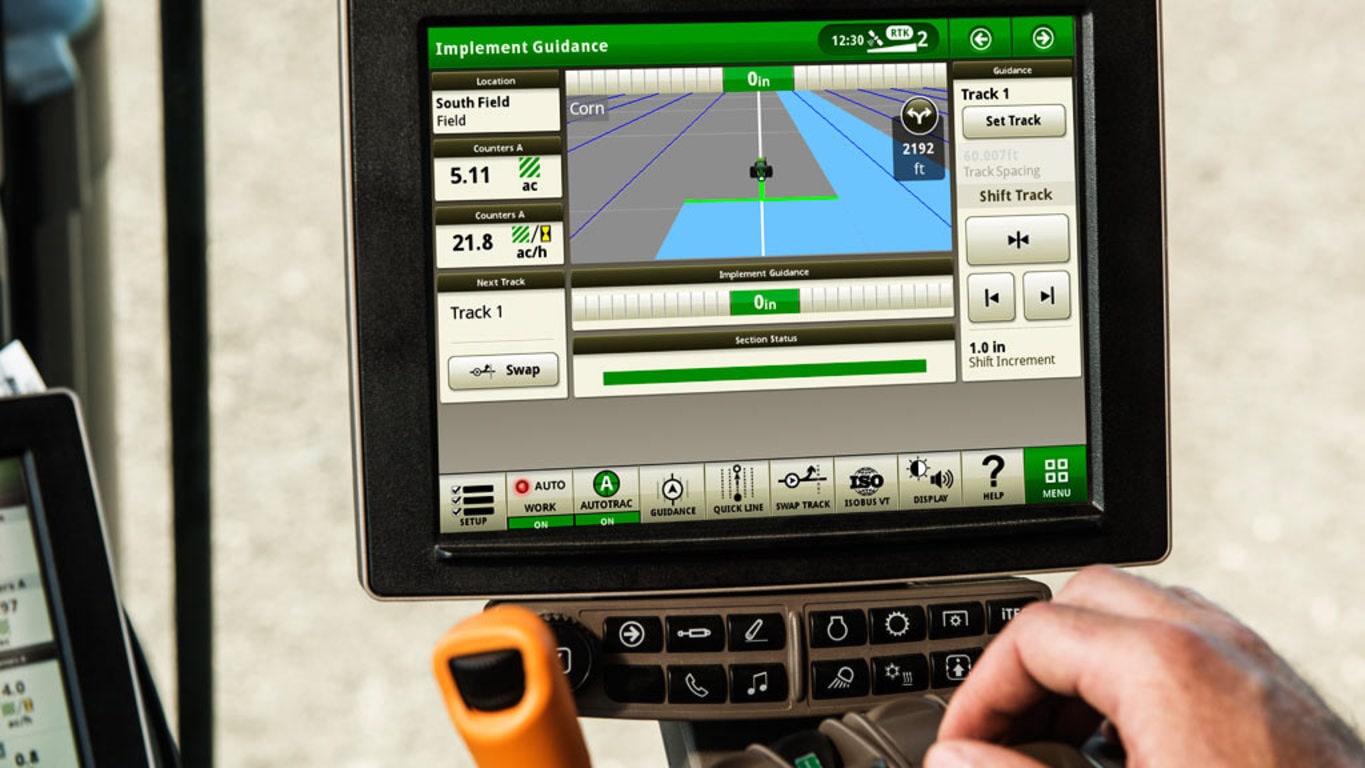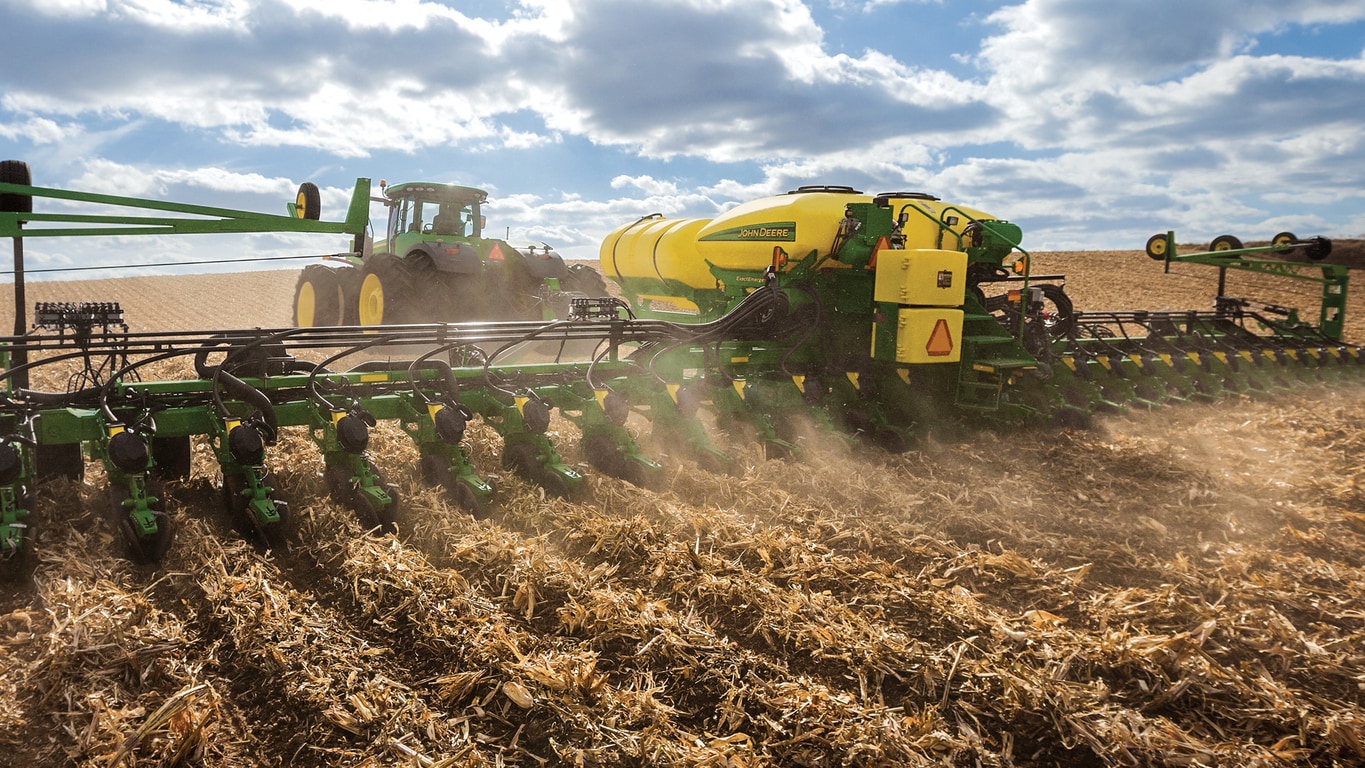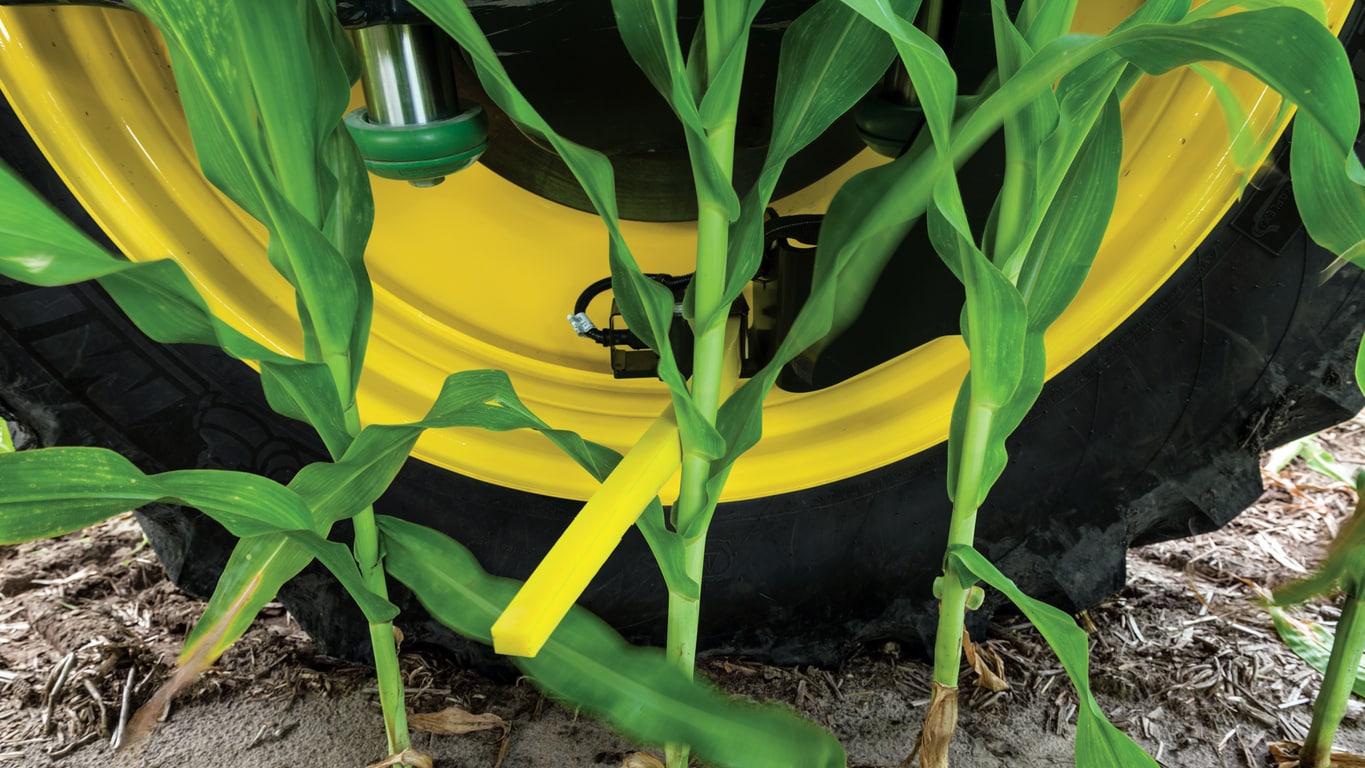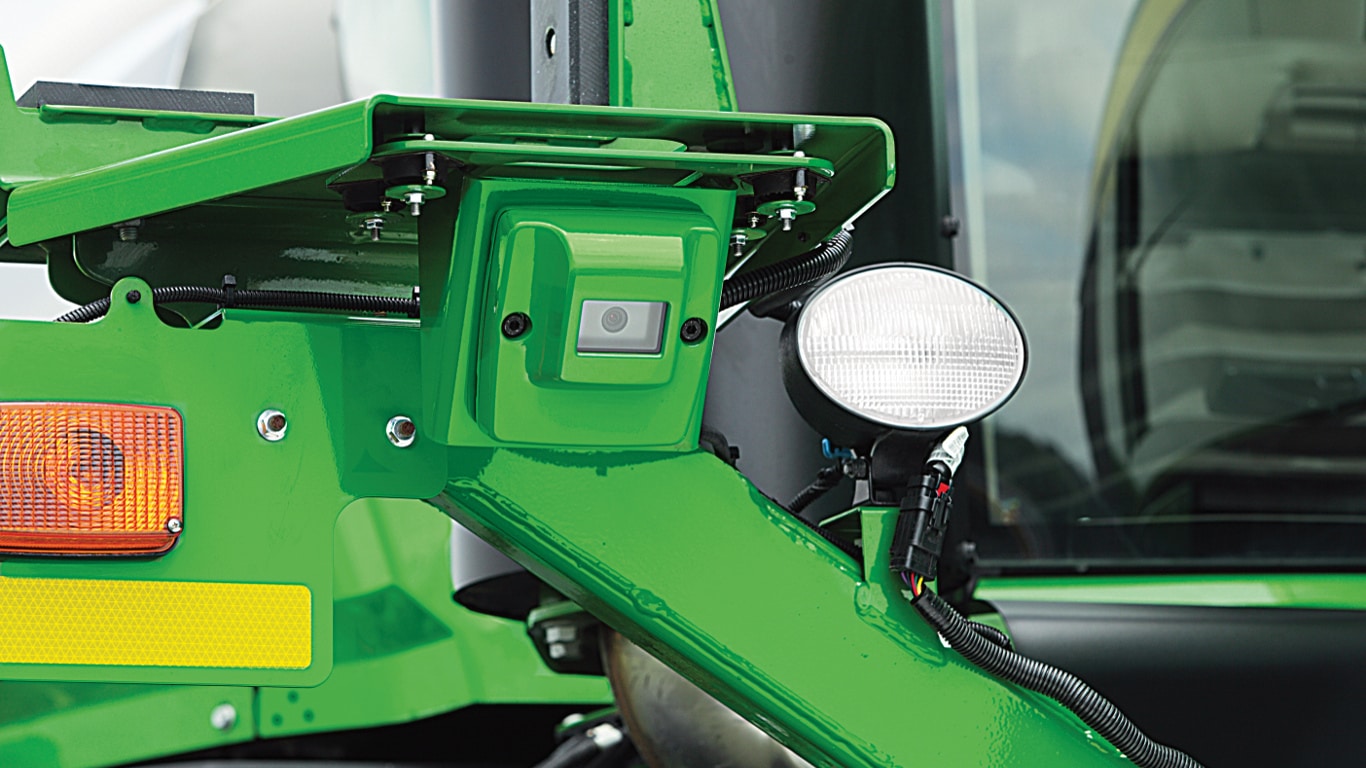
StarFire RTK Radio 450
- Ideal for use in challenging conditions where maintaining a signal is difficult
- Dealer-owned RTK network benefits producers
- Provides less chance of radio interference
- Highly accurate and repeatable GPS correction
Features
Precise accuracy in the field
The StarFire™ receiver provides a great deal of accuracy (3 cm [1.2 in.]) when used as a standalone unit. If you find yourself in a situation where you need a greater level of accuracy or if you need precise vertical accuracy, a StarFire receiver paired with a John Deere RTK Radio may be the solution for you.
RTK benefits:
- 2.5-cm (1-in.) horizontal accuracy
- Less than 1-minute pull-in time
- Ideal for hilly terrain or when shading can be an issue
- Increased vertical accuracy
- Preferred solution for land leveling or earthmoving applications
Provides highly accurate, repeatable GPS correction
 Planting can require precise accuracy
Planting can require precise accuracy

RTK from John Deere provides highly accurate, repeatable corrections from global positioning system (GPS) to John Deere's suite of precision ag applications. RTK utilizes a local, ground-based reference station that transmits the high-accuracy corrections to a StarFire receiver on a machine via RTK Radios.
StarFire RTK accuracy depends on the distance between the base station and the machine. The shorter the distance, the more accurate the system will be. In general, the accuracy of StarFire RTK is described below.
- +/- 2.5-cm (1-in.) horizontal pass-to-pass, 95 percent of the time, 20 km (12 mile) baseline
- +/- 5-cm (2-in.) vertical pass-to-pass, 95 percent of the time, 2 km (1 mile) baseline
- Up to 20 km (12 miles) line of sight
- Measured at the receiver every 15 minutes
Dealer-owned RTK network benefits producers
 Dealers are critical to RTK network's success
Dealers are critical to RTK network's success

More than 200 John Deere dealers across the United States and Canada have set up a large, robust RTK network. This is beneficial for several reasons:
- Producers have a lower investment cost because the dealer purchases and is responsible for base station upkeep.
- Dealer networks cover more area with the RTK signal, giving many producers access to RTK on all their grounds.
- RTK network is owned, maintained, and supported by a local, certified John Deere dealer.
Contact a local John Deere dealer to inquire about RTK network coverage.
A U.S. Federal Communications Commission (FCC) license is required when utilizing the John Deere RTK Radio 450 on a base station or as a repeater.
Licensing is not required for an RTK machine configuration.
For more details and assistance on obtaining a license, refer to the Dealer Corner section of StellarSupport™ system.
Reduce radio interference with John Deere RTK Radio 450
 John Deere RTK Radio 450
John Deere RTK Radio 450

The John Deere RTK Radio 450 requires a license for a dedicated frequency. While a license must be paid for, the user owns that specific frequency. Unlike the John Deere RTK Radio 900 frequencies, wireless providers or anyone else cannot use that frequency, thus eliminating signal jamming.
The following is a simple way to think about the difference between a John Deere RTK Radio 900 and RTK Radio 450:
- The John Deere RTK Radio 900 uses a frequency band that is like an interstate: it is free and open to the public. If only a few people are using the interstate, it moves fast; however, when everyone uses it at the same time, there is a traffic jam and it moves slowly. Conversely, the John Deere RTK Radio 450 is a private road.
Broaden RTK availability with repeaters
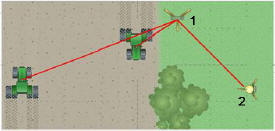 Repeater diagram with repeater (1) and RTK base station (2)
Repeater diagram with repeater (1) and RTK base station (2)

RTK repeaters are radios that can be used to improve base station signal coverage around obstacles, such as trees or rolling terrain. The purpose of the RTK repeater is to receive the correction signal coming from the base station and then transmit that correction signal.
More than one repeater can be used with one base station, but the repeater cannot receive signal from each other in a daisy-chain configuration. In order to operate, a repeater must be connected to a 12-V power source.
A repeater is the same as the radio that is on a machine or base station receiver.
A repeater consists of the following:
- John Deere RTK Radio 450 or 900
- Power harness and bracket


